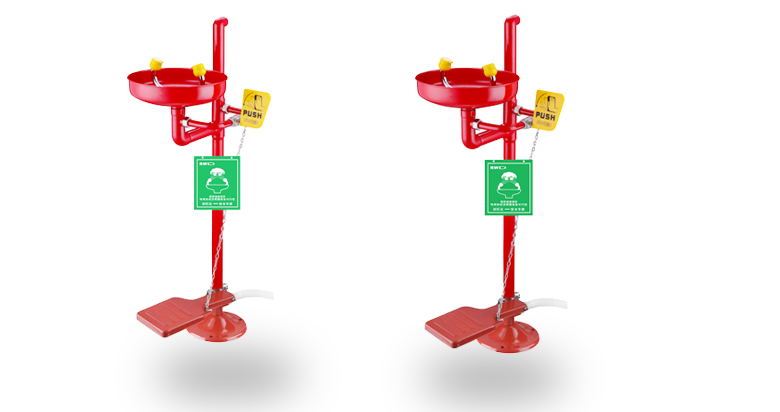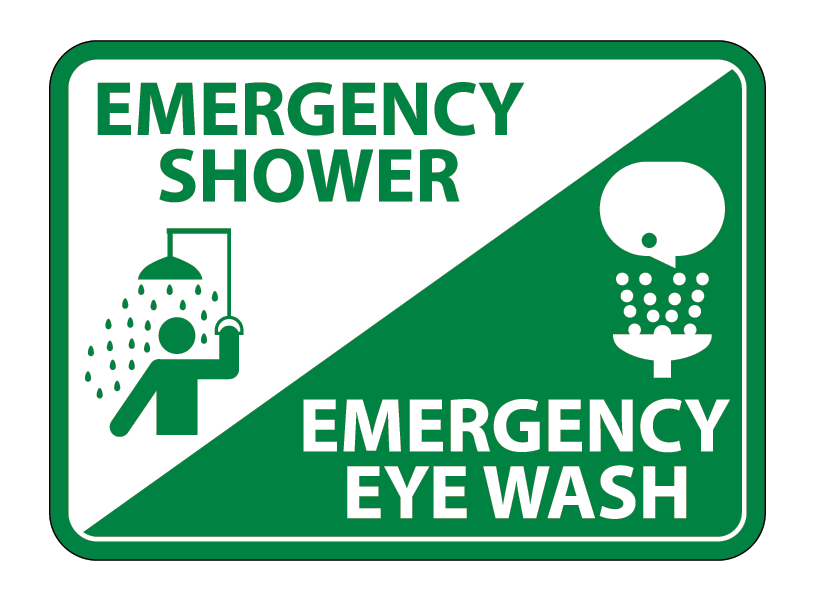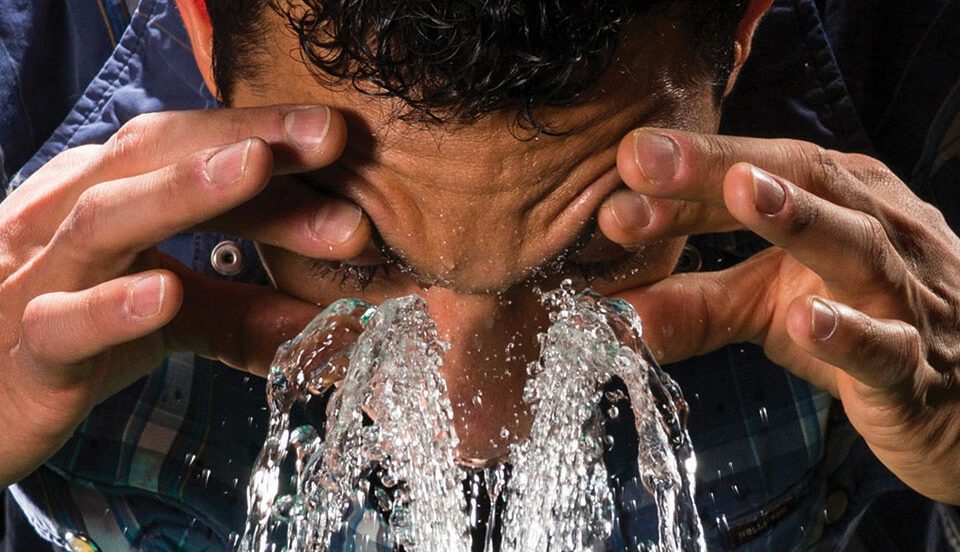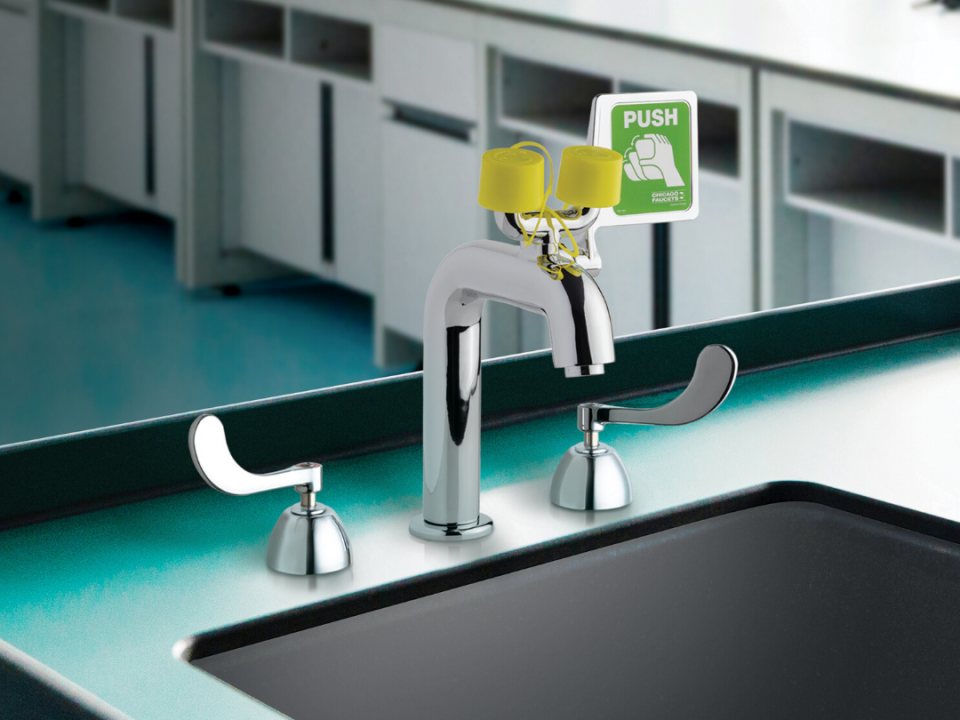Emergency Deluge Shower station

Precautions for installing eyewash and safety shower
2023年5月9日
What are some common hazards that require an eyewash station?
2023年7月19日An Emergency Deluge Shower Station, also known as an eyewash station or safety shower, is a safety device designed to protect individuals from hazardous substances. These stations are typically found in laboratories, industrial facilities, and other workplaces where individuals might be exposed to harmful chemicals or particulates.
Here is an overview of its various features:
Features
- Shower Head: The shower head is designed to deliver a large volume of water (usually around 20 gallons per minute) in a short period of time. This is to ensure that any harmful substance is quickly washed away from the user’s body.
- Pull Rod: The pull rod is used to activate the shower. It must be easy to reach and operate, even for someone who is in distress or has impaired vision.
- Drainage: Some emergency showers have a built-in drainage system to handle the large volume of water they discharge.
- Eyewash Station: Often, an eyewash station is included as part of the emergency shower. This allows individuals to flush their eyes with a gentle stream of water in case they are exposed to harmful substances.
- Signage: Emergency showers should be clearly marked with signage that is visible from a distance, so that they can be easily located in an emergency.
Usage
In an emergency situation where an individual has been exposed to a hazardous substance, the emergency shower should be activated immediately. The user should remain under the shower for at least 15 minutes, flushing all areas of possible contamination. If an eyewash station is included, the eyes should also be flushed for at least 15 minutes.
It is important to note that after using an emergency shower, the affected individual should still seek medical attention as soon as possible.
Maintenance
Regular maintenance and testing of emergency deluge shower stations is crucial to ensure that they function correctly when needed. They should be tested periodically, at least once a week, to ensure that they are operational and that water is flowing correctly.
The Occupational Safety and Health Administration (OSHA) in the United States provides guidelines for the installation, use, and maintenance of emergency showers and eyewash stations in its standard 29 CFR 1910.151 ↗.
Remember, safety must always be the top priority in any environment where hazardous materials are handled.

❑ Emergency Shower
❑ Emergency Shower with all stainless steel
components
FEATURES:
• 8 in. yellow plastic showerhead
• 8 in. stainless steel showerhead
• Horizontal supply
• Internal 20 gpm regulator flow control
• 1 in. NPT female brass, chrome-plated, stay-open valve
• 1 in. NPT female stainless steel, stay-open valve
• Powder coated yellow, aluminum triangular pull rod
activator
• Stainless steel triangular pull rod activator
• 1 in. NPT female inlet
• 20 gpm @ 30 psi
• Universal Emergency Sign Included
FINISHES:
COMPLIANCE:
• Certified to ANSI/ISEA Z358.1
OPTIONS:
Add suffix to model #
• Anti-freeze protection valve ❑ -FPV
• Self-closing shower valve with chain & ring ❑ -SCSV
• Anti-scald protection valve ❑ -SPV
• 1 in. IPS stainless steel ball valve ❑ -SSBV1
• Stainless steel showerhead ❑ -SSH
• Stainless steel pullrod ❑ -SPR
Precautions for using Emergency Deluge Shower station
Proper usage of an Emergency Deluge Shower Station is crucial for minimizing harm in case of an accident involving hazardous substances. Here are some key precautions to take:
- Clear Access: Always ensure that the path to the shower station is clear of any obstacles. In an emergency, every second counts, and you don’t want to waste time maneuvering around items in the way.
- Immediate Usage: If a spill or exposure occurs, use the deluge shower immediately. The faster the contaminant is diluted and removed, the less damage it can do.
- Adequate Time: Remain under the shower for at least 15 minutes. This is the generally recommended time for effectively flushing out contaminants.
- Remove Contaminated Clothing: As soon as possible, remove any clothing that may have been exposed to the hazardous substance. This should be done under the shower to prevent the chemicals from spreading.
- Proper Eye Protection: If the facility is equipped with an eyewash station, utilize it to flush out your eyes, especially if they were exposed. Hold your eyes open to ensure the water can thoroughly rinse them.
- Seek Medical Attention: Even after thoroughly rinsing with the emergency shower, it’s important to seek medical attention immediately. Some chemicals can have delayed reactions or cause internal damage that isn’t immediately noticeable.
- Training: All personnel should be trained on how to use the emergency shower and eyewash station correctly. This includes knowledge about where the station is located, how to activate it, and how long to rinse.
- Maintenance: Regularly test and maintain the emergency shower to ensure it is always ready for use. This includes checking the water flow, temperature, and cleanliness.
Remember, the purpose of an emergency shower is to quickly dilute and wash away harmful substances. However, it’s not a substitute for proper protective equipment and safe handling procedures when working with hazardous materials. Safety practices should always be in place to prevent accidents from occurring in the first place.
The Occupational Safety and Health Administration (OSHA) requires that employers provide employees with access to an eyewash station in any Read more
ANSI/ISEA Z358.1-2014 Standard for Emergency Eyewash and Shower Equipment ohs_ansi type eye wash ANSI Z358.1-2004 pdf downloads PREFACE This Standard Read more
What is OSHA guidelines for eyewash? OSHA (Occupational Safety and Health Administration) has established guidelines for eyewash stations to ensure Read more
Emergency eyewash and shower stations are critical safety equipment that can help prevent serious eye and skin injuries in the Read more
What are some common hazards that require an eyewash station? Eyewash stations are typically required in workplaces where employees are Read more









